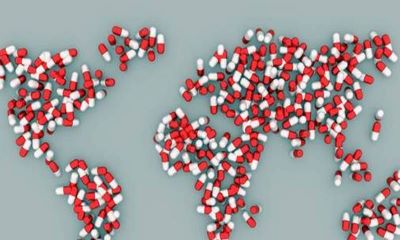Long waiting period for critical equipment and 50% hike in cost of APIs imported from China are among the immediate challenges

The pharmaceutical industry faces concentration risk with nearly 70% of the country’s Active Pharmaceutical Ingredients (API) imported from China, necessitating sufficient diffusion of sources and markets. The dependence rises to 90% for certain life-saving antibiotics like Cephalosporins, Azithromycin, and Penicillin. Since these medicines are under price control, companies are forced to absorb the higher cost, raising questions about their viability. In this scenario, over time, certain medicines could disappear from retail shelves.
These are among the major findings of the recent report titled, ‘Pharma Industry: Trends and Prospects’ by Infomerics Valuation and Rating, the noted SEBI-registered and RBI-accredited financial services credit rating agency.
The report points out how the steep 50% rise in the cost of APIs is hitting the industry hard, raising doubts on the availability of drugs that could lead to shortages, particularly of those that are key in COVID-19 therapy. For example, the API prices of certain drugs like fever and pain relief drug paracetamol and life-saving antibiotic Meropenem (also used for COVID), and anti-diabetic metformin, have more than doubled to as high as 139%, 127%, and 124% respectively.
As per the Infomerics report, one of the major challenges faced by the Indian vaccine manufacturers is the crucial shortage of equipment, for example, small- and large-scale bioreactors and fermenters, with long waiting times for equipment ordered abroad.
At the same time, it highlights the fact that despite being wrecked by pandemic, the pharma industry grew 37% year-on-year and 15% sequentially in Q1 FY 2021-22. The growth was driven by sales of COVID-19 treatment drugs and other drugs.
“The growth of this crucial sector is dependent on the requisite government support, enabling eco-system and a conducive policy frame,” states Infomerics.
Future growth depends on big ticket investments and infrastructure
“India contributes 3.5% of total drugs and medicines exported globally by trading with more than 200 countries. Moreover, the Indian pharma industry supplies over 40% of the generics in the biggest pharma market – the US and about 25 percent of the prescription drugs in the UK, along with catering to over 60% of the global vaccine demand. The market is expected to grow at approximately 12% compound annual growth rate (CAGR). Clearly, then, with India being the largest provider of generic drugs globally and its significant contribution to the global market, the pharmaceutical sector is here to stay,” the report mentions while being highly optimistic about the future of the sector.
The report also highlights the slew of important events and developments in the drugs and pharmaceuticals space-far too numerous to list here. Some important signposts in this increasingly important sector include Sun Pharmaceuticals acquisition of the patent license for Dapagliflozin from AstraZeneca (June 2021); originating a real-time COVID-19 detection kit ‘ViraGen’ (May 2021) based on multiplex polymerase chain reaction (PCR) technology by Cipla; indigenous development of the technology of Oxygen Enrichment Unit (OEU) (April 2021) by the CSIR-CMERI, Durgapur; and the Central government’s decision (January 2021) to set up three bulk drug parks at Rs. 14,300 crore (US $1,957 million) to manufacture chemical compounds or APIs for medicines and reduce imports from China. These and other developments have important implications not just for the sustenance of this sector but also its growth over the long haul.
It terms the initiatives such as Rs. 15,000 crore Production Linked Incentive (PLI) scheme for the promotion of domestic manufacturing of critical key starting materials (KSMs), Drug Intermediates, and APIs as highly catalytic towards making the industry self-reliant and discouraging sub-standard API imports. It also notes the wide-ranging ramifications of liberalized Foreign Direct Investment (FDI) including 74% FDI under automatic route in brownfield pharmaceuticals that would augur well for the steady growth of the industry.
The report recommends that the industry explore new and innovative options to generate and sustain new revenue streams. The increased demand for healthcare and insurance, for example, opens new avenues for investment, particularly in areas like chronic therapies for diseases such as cardiovascular, anti-diabetes, antidepressants and anti-cancer treatment.
“The cost of manufacturing in India is approximately 33% lower than that of the US. Therefore, the industry can benefit from these attributes and accordingly scale up production, productivity and efficiency. But the realization of this potential necessitates harnessing economies of scale to move to a newer and higher orbit,” concludes the report.
Subscribe to our newsletter & stay updated.